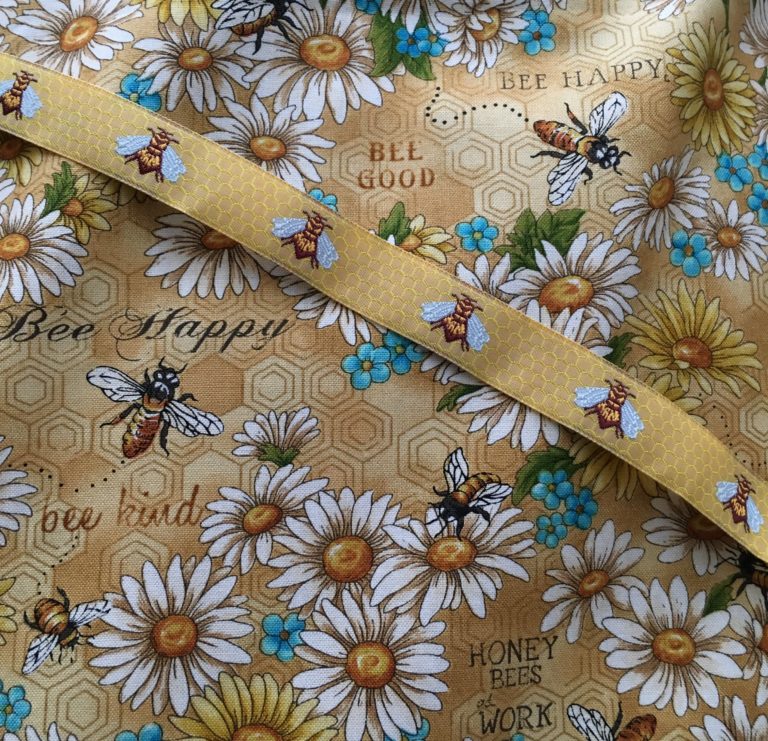
In the olden days of high school, I used to make many of my clothes, when it was often less expensive to sew your own out of good-quality fabric than to buy something similar in a store . This was before the advent of $5 shirts that fall apart in no time and head to the landfill. Now it’s often not cost-effective to make your own. It’s also much harder to find good fabric locally, at least where I live; much of what is available in local stores is aimed at quilters or for costumes, it seems. There are plenty of online options, but I think it’s hard to buy something like fabric without being able to see and feel it person. (Full disclosure: I worked at a fabric store during those high school years and have a few opinions on the fabric front.)
There has been a resurgence in home sewing, which isn’t surprising to me. It has been observed before that historically we have seen a backlash against technology manifested in an increased interest in handcrafts: the Arts and Crafts movement that began in England in the mid-1800s in reaction to the Industrial Revolution and factory-produced goods, for example. Of course, there’s more to it than that; most things are more complex than we give them credit for and are willing to untangle.
In any event, it’s been a long time since I’ve sat down at a sewing machine. My last machine disappeared and its replacement sat unused. Recently, with the decision to have a craft room (see Transforming the Room of Shame), it seemed inevitable that I would rev up the new machine sooner rather than later.
My crafting direction often follows a domino effect; I decide I want to do something but then I back up several steps and projects to get done before getting down to it. This was no exception.

My aunt had passed along her no-longer-used serger to me. Since I have just begun dabbling in handweaving (more on that in another post), I had been considering how to handle that cloth if I wanted to cut into it to sew something. The sewing machine and a zigzag stitch to secure the cut threads were my default but, with the serger, new horizons beckoned. For those unfamiliar with a serger, it is a (scary, daunting) machine that will sew a seam while making an overcast stitch along a fabric edge that is trimmed with a knife close to the overcast to prevent unraveling. (I confess that when I work on the serger, the line from Monty Python’s Architect Sketch, “The tenants arrive here and are carried along the corridor on a conveyor belt in extreme comfort, past murals depicting Mediterranean scenes, towards the rotating knives.” often pops into my head.) It will also make an overcast stitch and trim without seaming, as is often found on napkin edges. Here’s a YouTube video that gives you a look under the hood. Sergers don’t replace sewing machines but are a great companion to them. They are also somewhat expensive and I doubt I would have bought one—thanks, Auntie!
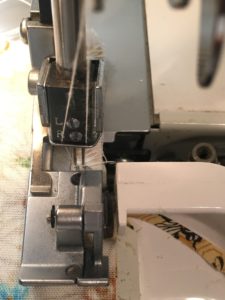
I found a free pattern at So Sew Easy and took my sewing machine on its maiden voyage. I would say that it wasn’t quite like riding a bicycle. I had to learn my way around a new machine (most maddeningly, the lever to lift the presser foot is on the right side and all my previous machines had it on the left. That’s a well-ingrained habit, apparently, and I’m still reaching for the wrong side.). It was a good project to regain my sewing legs, as it could fall into the school of “good enough”. And it works just as advertised.
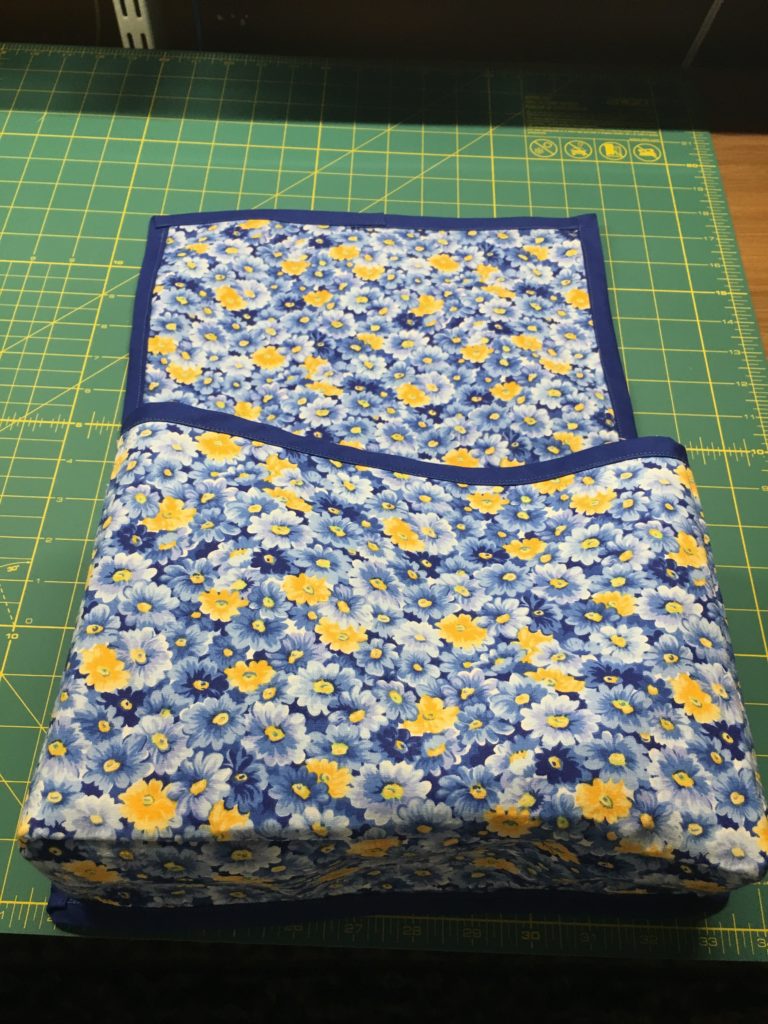
An observation that kept cropping up in my research on sergers was that when the serger trims the fabric, it can make quite a mess. Not wanting to goober up my craft room any more than necessary, this sent me on a quest to find something to help with that—suggestions included hanging a plastic shopping bag under the machine, a box with one flap underneath. Not very elegant solutions, but I happened upon a sewing pattern to make a scrap catcher out of fabric for the serger. So before using the serger I went to the sewing machine: project dominoes rearranged again.


But before serging—sewing weights! Apparently this is a new must-have in the sewing world. Well, maybe not “must,” but they make so much sense. They are essentially bean bags that weigh down fabric keeping it in place when you need both hands elsewhere or taking the place of pins for cutting out patterns, saving time and and the pattern pieces from pin damage. Brilliant! (And rotary cutters on a self-healing mat instead of scissors—so much easier!)
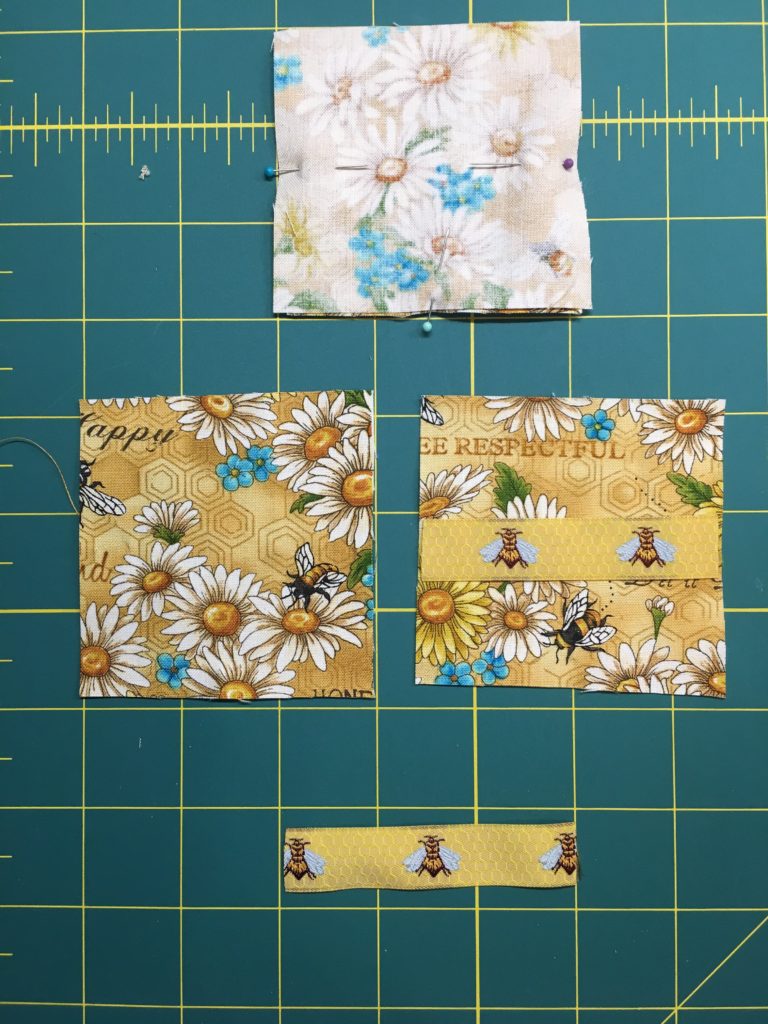
I had seen some darling bee fabric on fabric.com. Too cute for my tastes in décor but charming nonetheless, so that’s what I decided to use for the weights. I also found bee ribbon at Renaissance Ribbons to finish off the project; they have a really great selection(including ribbons from the great colorist and creative artist Kaffe Fassett). I saw tutorials for a variety of sewing weights, some merely wrapping ribbon around washers, but ended up going with this free pattern from Sew Can She. The recommendation for the filling was for rice but I thought that wasn’t quite heavy enough for what I wanted so I bulk-ordered BBs. I can’t imagine what my shopping algorithm might look like!
I sandwiched the ribbon between the fronts and backs, serged three of the sides closed, turned and pressed the seams, pressed under the opening seam allowance, filled with BBs, and sewed them shut. It took a little figuring out how to do the actual sewing on these as the BBs would, naturally, roll towards the sewing machine needle as I tried to seam them. I ended up doing a hand basting as low on the bags as I could while keeping the opening closed with Clover clips, then hand basting the opening before running it through the machine to stitch it shut. A little extra time but worked like a charm.
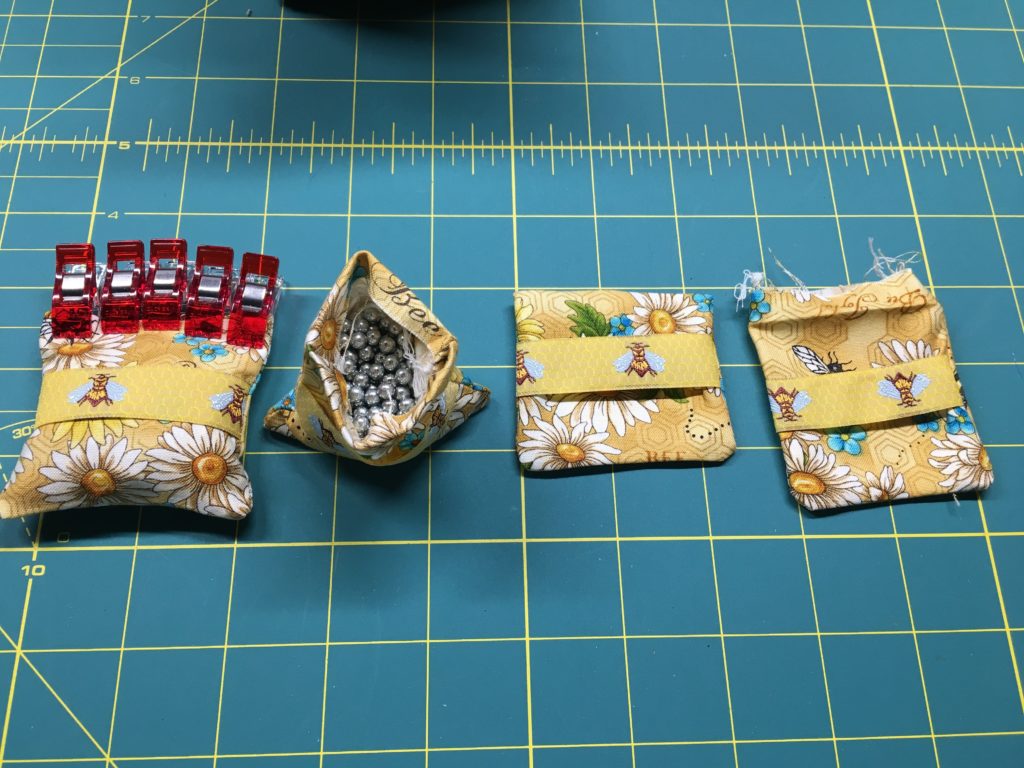
Now that I’m ready to use the serger for the project that set me off down this rabbit hole, and I’m accessorized for my sewing and serging (and gotten another bulk order of BBs for yet another project)–stay tuned!
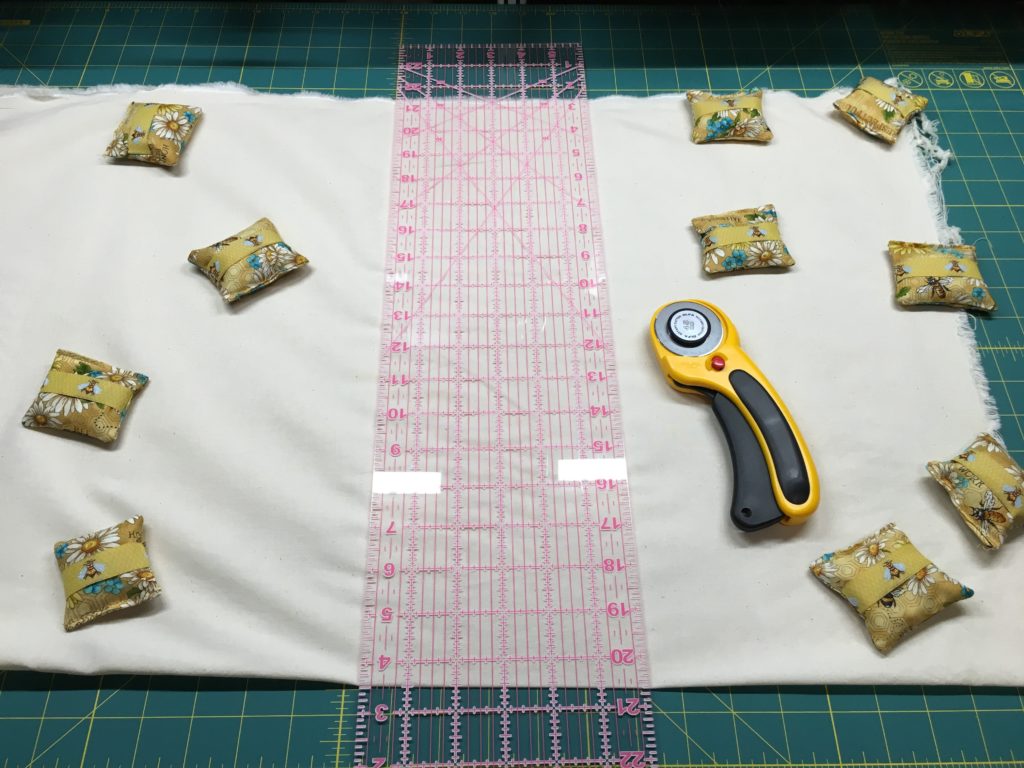


Mayra Cecilia
26 Jan 2019Thanks for using the pattern, a lovely catcher indeed! All the best in 2019.
Handmade Bits and Bobs
28 Jan 2019Appreciate your clever design!
Russell D McDowell
21 Jan 2019Are you trying to convert us into home craftpersons, self-sustaining ones at that? You write so earnestly and directly, one could be tempted to grab the nearest serger and have at it.
Handmade Bits and Bobs
22 Jan 2019Everyone should get their craft on, however it might manifest. Just beware the rotating knives!
Carolyn Hauben
21 Jan 2019Thanks for the mention, niece. Keep those projects coming.
Handmade Bits and Bobs
21 Jan 2019Thanks for the serger. And I don’t think we have to worry about new projects 🙂